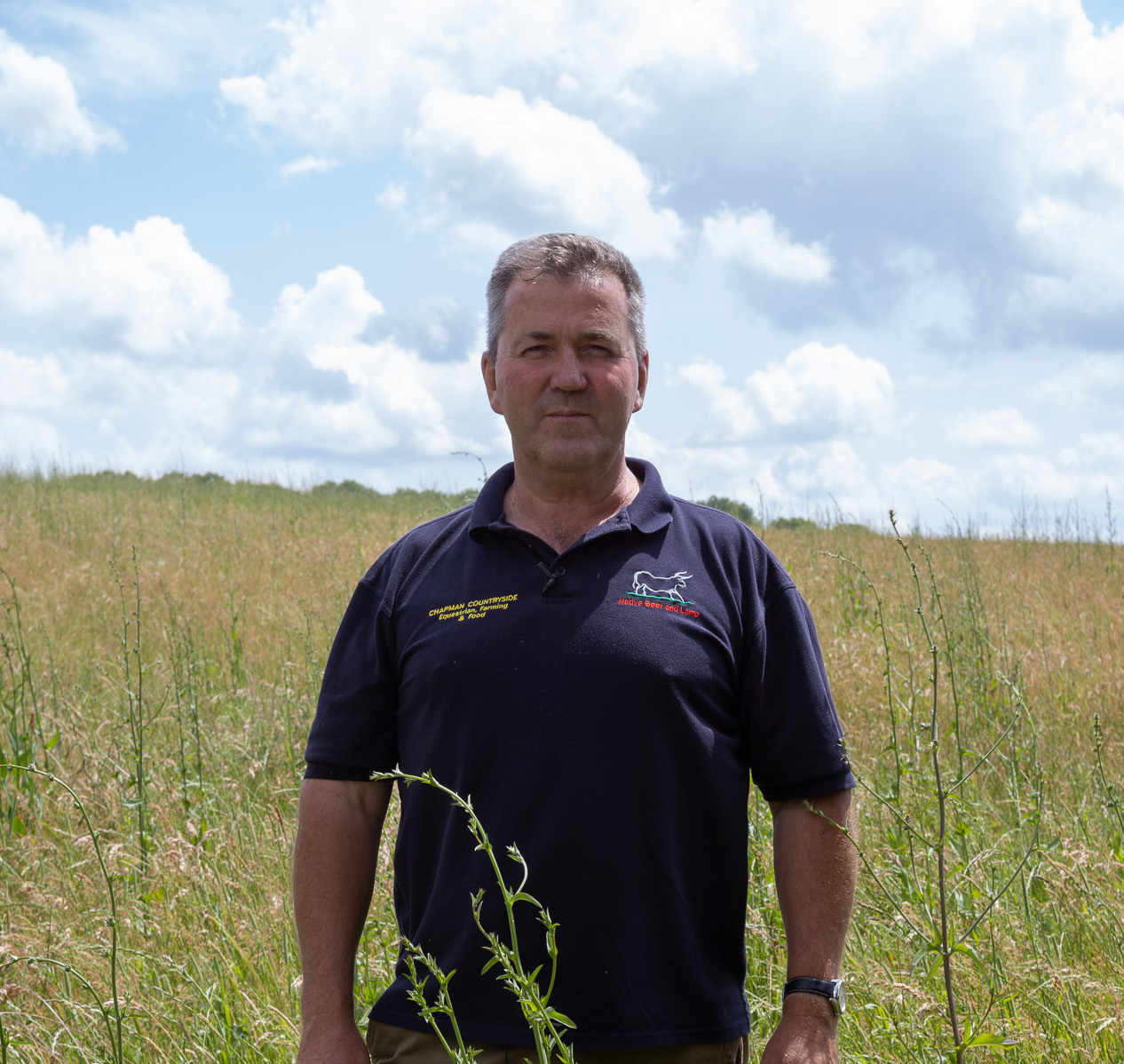

Farm Type: Pastoral
Location: Chiltern Hills
Size: 700 Acres
Soil Type: Sandy clay loam, clay and flint, chalk
Mixes Used: Herbal Leys/GS4 Legume & Herb Rich Sward
Jonathan Chapman started using herbal leys five years ago in an arable conversion and says the results have surpassed his expectations.
Bailey Hill Farm, in the Chiltern Hills in South Buckinghamshire, totals 700 acres divided into seven areas of land, all of which are in Countryside Stewardship Schemes. One area is in arable conversion and the rest is GS2 long term, low-input permanent grassland. The farm is pastoral, with meat from the mob-grazed sheep and Red Devons and pedigree Murray Grey cattle sold direct to the on-farm butchery.
Jonathan describes the soil type as sandy clay loam, over a clay and flint, over chalk. ‘It’s quite a mixture and it’s quite difficult ground to farm. In many ways it’s the worst of both worlds. It tends to dry out in the summer very rapidly because we are on a south-facing hill and it’s always breezy but in winter it tends to lie wet because of the clay layer under the topsoil.’
The first herbal ley went in five years ago on a tenanted area of the farm which had been in a continuous short arable rotation of oilseed rape, barley and wheat for nearly thirty years. As part of the mid-tier stewardship requirements, a soil test was carried out prior to drilling the herbal ley. The results were poor, with carbon content of the soil below 2%. The aim of planting the herbal ley was to regenerate the soil, improve the biodiversity on the farm and produce forage for the cattle.
Jonathan asked Cotswold Seeds to create a bespoke mixture with some late perennial ryegrasses and creeping red fescues to provide ‘a bit of infill between the plants and give added soil protection’ and he experimented with various methods of establishment - sowing in the spring as well as the autumn. He’s used a conventional drill as well as a cross slot direct drill and all the establishments were successful, with the help of some well-timed rain! After direct drilling in August a lot of grass came through in the mix but after taking a silage cut in the following spring, the legumes all came through really well.
‘To say it has surpassed my expectations would be an understatement, especially in the dry years like last year,’ enthuses Jonathan.’Species like the deep rooting legumes, chicory, other herbs, sainfoin and plantain will keep going when the rainfall drops off and commercial ryegrass varieties go dormant and burn off. The chalk loving sainfoin has been a sensation. It’s lasted a lot longer than I thought it would. We have just tested the soils on the arable conversion herbal ley and recorded 3.8% organic matter, meaning it’s nearly doubled in 5 years!’
Jonathan has found so many benefits from the herbal leys.
‘It’s not just about protein and energy. When you are feeding cattle it’s also about the mineral content which enables body systems to function correctly. The herbal ley provides a good balanced ration. It’s like a salad leaf bowl in terms of variety. Instead of boring old ryegrass the cattle can go and nibble on some white clover, red clover, sainfoin, or whatever takes their fancy. By mob grazing we encourage them to eat the whole lot and it avoids the problems you’d get of certain varieties prospering and other things dying out.’
The herbal leys have improved the animals’ condition and growth rates which has been particularly beneficial with young animals. ‘We graze the yearlings on the herbal ley because they need protein to grow a frame with and regularly achieve average growth rates of 950 grams per day over a whole 8 month grazing season,’ says Jonathan.
There’s also been a surprising welfare benefit. ‘Because the animal puts his head down into the tall herbal it keeps the flies off them. We don’t fly treat any of the cattle like we used to.’ Jonathan is also recording ‘very low faecal egg counts when they are on the herbal leys.’ thanks to the anthelmintic properties of species like sainfoin, birdsfoot trefoil and chicory.
‘It’s a win win,’ says Jonathan.
Discover more about Cotswold Seeds herbal leys
Date Posted: 30th July 2024



